Abstract
OBJECTIVES: Recent challenges to affirmative action suggest the need to reassess the status of the admission of underrepresented minority students to US medical schools. METHODS: The Association of American medical colleges provided US medical school enrollment data and characteristics. Five measures of underrepresented minority enrolled and an overall performance scale were constructed for each school. Multivariate regression identified significant overall performance predictors. Predicted and observed values were compared. RESULTS: Underrepresented minority enrollment increased by 43% after 1986, peaked at 2014 in 1994, did not increase in 1995, and decreased by 5% in 1996. Enrollment was associated with increasing federal research funding and with percentage of underrepresented minorities in the sources population P < .001). The 1996 decline was almost entirely limited to public medical schools. Those in California, Texas, Mississippi, and Louisiana accounted for 18% of 1995 enrollment but 44% of the 1996 decline. CONCLUSIONS: Recent gains in medical school enrollment of underrepresented minorities are being reversed, particularly at public institutions. Implications exist for the health of poor, minority, and underserved communities, which are most likely to be cared for by underrepresented minority physicians.
Full text
PDF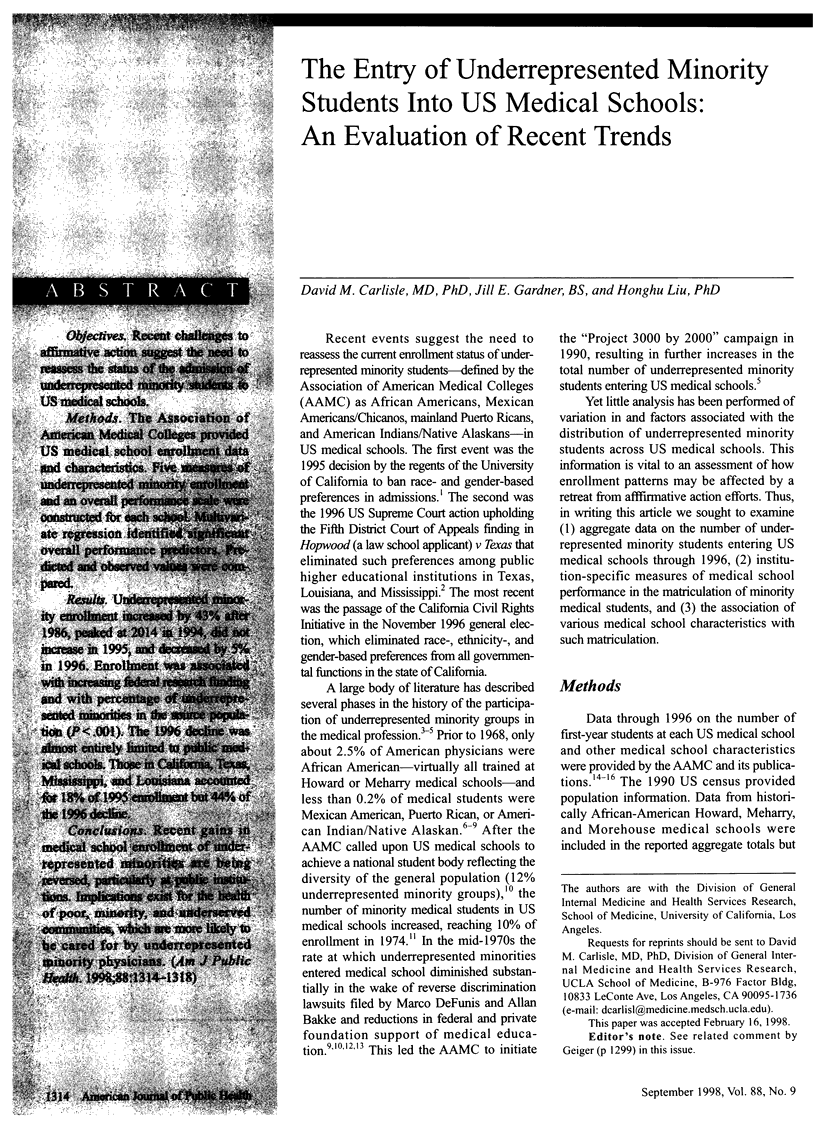
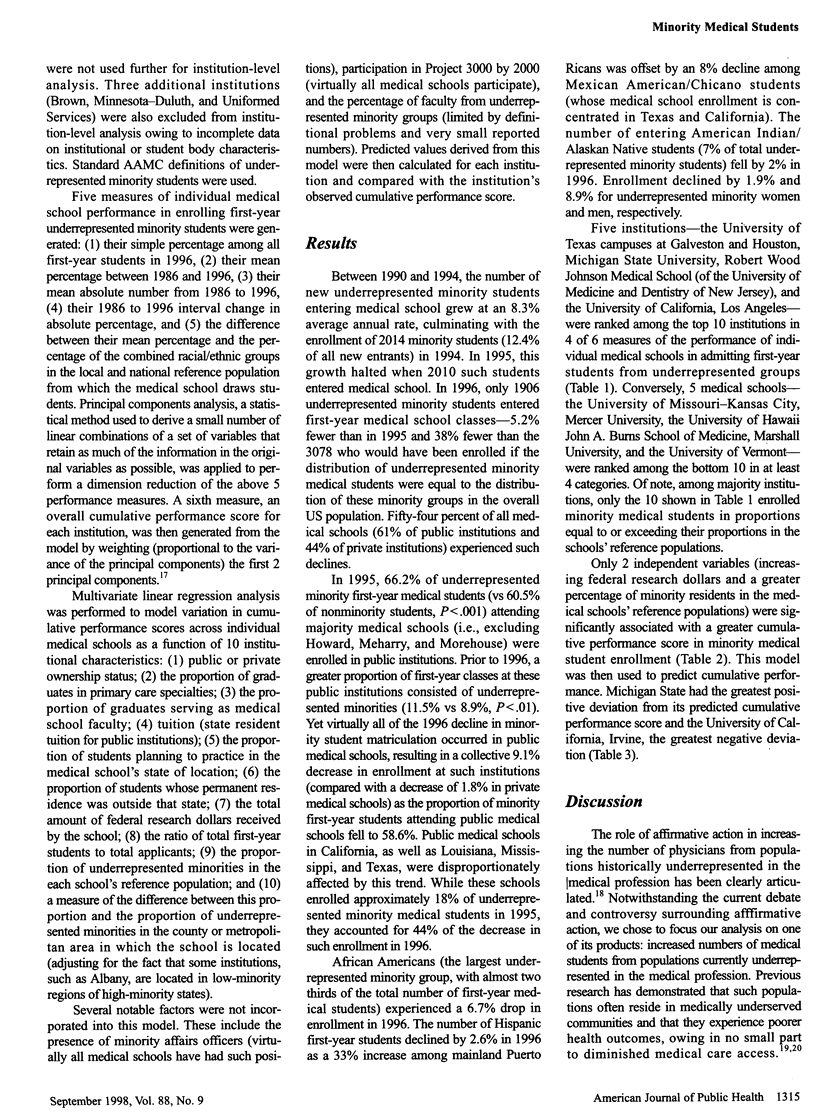
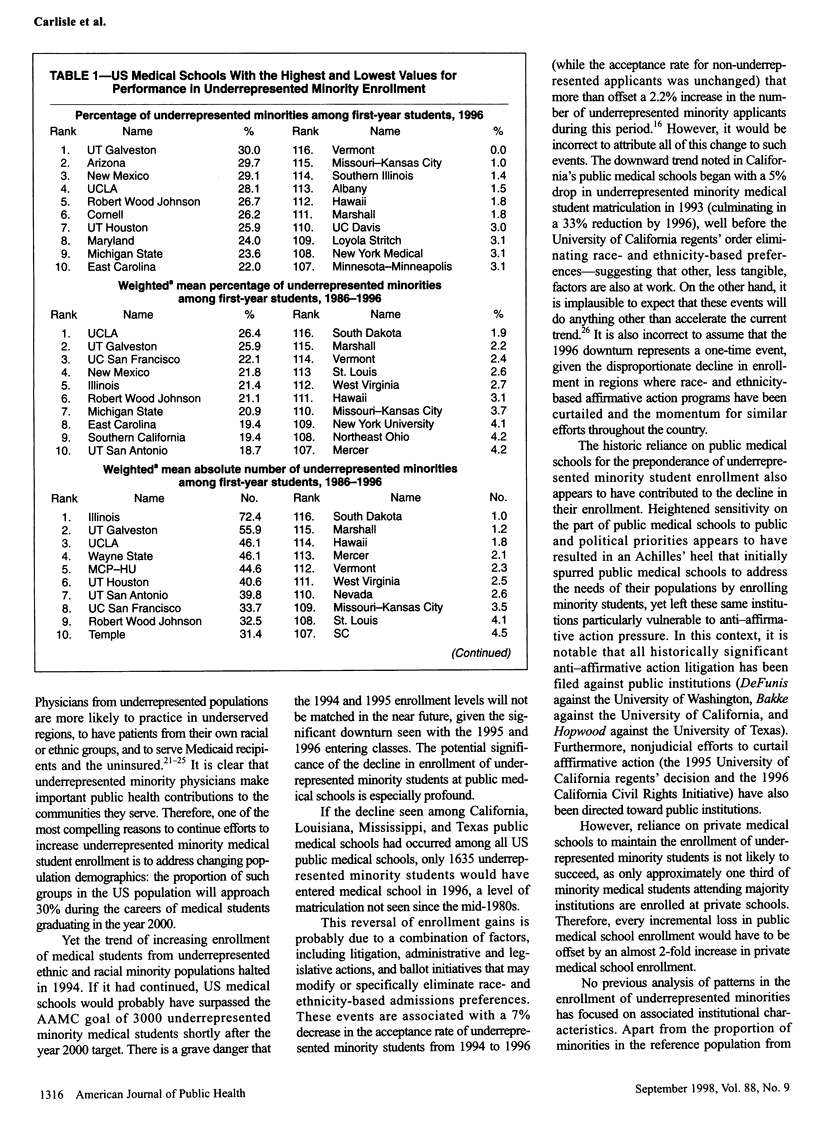
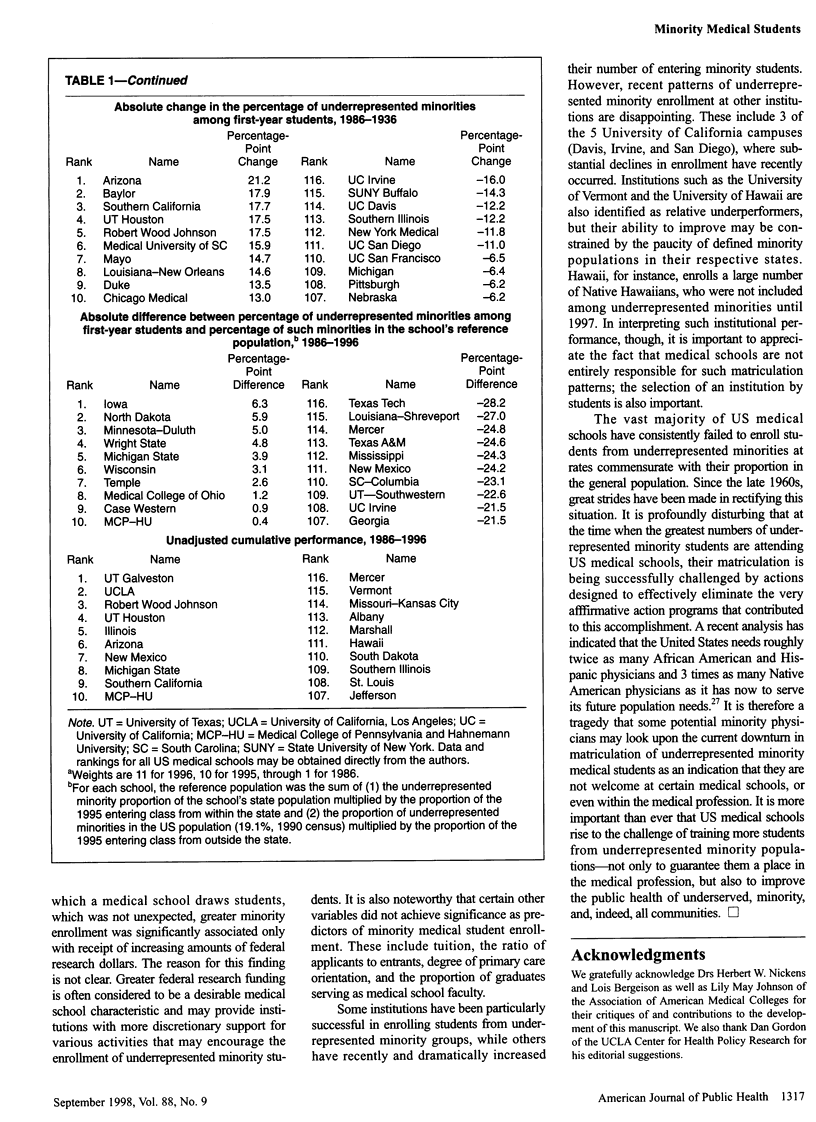
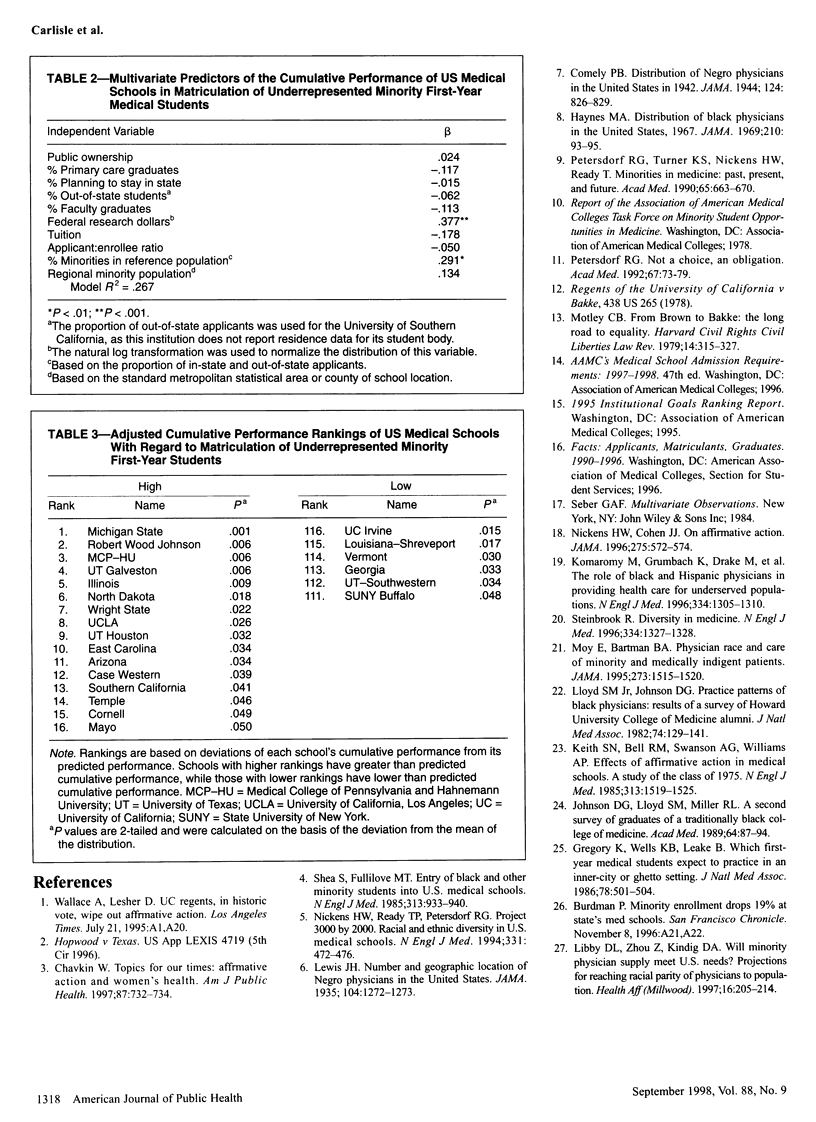
Selected References
These references are in PubMed. This may not be the complete list of references from this article.
- Chavkin W. Topics for our times: affirmative action and women's health. Am J Public Health. 1997 May;87(5):732–734. doi: 10.2105/ajph.87.5.732. [DOI] [PMC free article] [PubMed] [Google Scholar]
- Gregory K., Wells K. B., Leake B. Which first-year medical students expect to practice in an inner-city or ghetto setting. J Natl Med Assoc. 1986 Jun;78(6):501–504. [PMC free article] [PubMed] [Google Scholar]
- Haynes M. A. Distribution of black physicians in the United States, 1967. JAMA. 1969 Oct 6;210(1):93–95. [PubMed] [Google Scholar]
- Johnson D. G., Lloyd S. M., Jr, Miller R. L. A second survey of graduates of a traditionally black college of medicine. Acad Med. 1989 Feb;64(2):87–94. doi: 10.1097/00001888-198902000-00013. [DOI] [PubMed] [Google Scholar]
- Keith S. N., Bell R. M., Swanson A. G., Williams A. P. Effects of affirmative action in medical schools. A study of the class of 1975. N Engl J Med. 1985 Dec 12;313(24):1519–1525. doi: 10.1056/NEJM198512123132406. [DOI] [PubMed] [Google Scholar]
- Komaromy M., Grumbach K., Drake M., Vranizan K., Lurie N., Keane D., Bindman A. B. The role of black and Hispanic physicians in providing health care for underserved populations. N Engl J Med. 1996 May 16;334(20):1305–1310. doi: 10.1056/NEJM199605163342006. [DOI] [PubMed] [Google Scholar]
- Libby D. L., Zhou Z., Kindig D. A. Will minority physician supply meet U.S. needs? Health Aff (Millwood) 1997 Jul-Aug;16(4):205–214. doi: 10.1377/hlthaff.16.4.205. [DOI] [PubMed] [Google Scholar]
- Lloyd S. M., Jr, Johnson D. G. Practice patterns of black physicians: results of a survey of Howard University College of Medicine alumni. J Natl Med Assoc. 1982 Feb;74(2):129–141. [PMC free article] [PubMed] [Google Scholar]
- Moy E., Bartman B. A. Physician race and care of minority and medically indigent patients. JAMA. 1995 May 17;273(19):1515–1520. [PubMed] [Google Scholar]
- Nickens H. W., Cohen J. J. On affirmative action. JAMA. 1996 Feb 21;275(7):572–574. [PubMed] [Google Scholar]
- Nickens H. W., Ready T. P., Petersdorf R. G. Project 3000 by 2000. Racial and ethnic diversity in U.S. medical schools. N Engl J Med. 1994 Aug 18;331(7):472–476. doi: 10.1056/NEJM199408183310712. [DOI] [PubMed] [Google Scholar]
- Petersdorf R. G. Not a choice, an obligation. Acad Med. 1992 Feb;67(2):73–79. doi: 10.1097/00001888-199202000-00003. [DOI] [PubMed] [Google Scholar]
- Petersdorf R. G., Turner K. S., Nickens H. W., Ready T. Minorities in medicine: past, present, and future. Acad Med. 1990 Nov;65(11):663–670. doi: 10.1097/00001888-199011000-00001. [DOI] [PubMed] [Google Scholar]
- Shea S., Fullilove M. T. Entry of black and other minority students into U.S. medical schools. Historical perspective and recent trends. N Engl J Med. 1985 Oct 10;313(15):933–940. doi: 10.1056/NEJM198510103131506. [DOI] [PubMed] [Google Scholar]
- Steinbrook R. Diversity in medicine. N Engl J Med. 1996 May 16;334(20):1327–1328. doi: 10.1056/NEJM199605163342011. [DOI] [PubMed] [Google Scholar]


